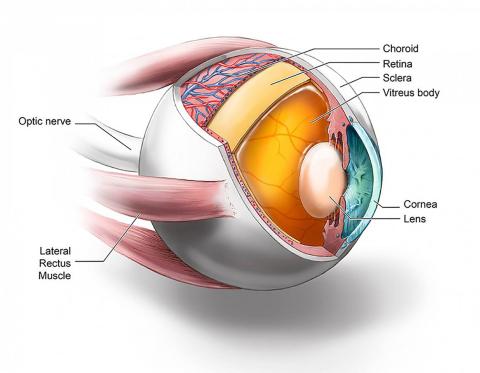Eyes of CJD Patients Show Evidence of Prions

Photo: Ryan Kissinger
Prion diseases originate when normally harmless prion protein molecules become abnormal and gather in clusters and filaments in the body and brain. Scientists hope that early diagnosis of prion and related diseases—such as Alzheimer’s, Parkinson’s and dementia with Lewy bodies—could lead to effective treatments that slow or prevent these diseases. Scientists from NIAID collaborated on the research with colleagues from the University of California at San Diego and UC-San Francisco.
About 40 percent of sporadic CJD patients develop eye problems that could lead to an eye exam, meaning the potential exists for the contamination of eye exam equipment designed for repeat use. Further, cadaveric corneal transplants from undiagnosed CJD patients have led to 2 probable and 3 possible cases of disease transmission, the researchers say.
Previous studies have shown that the eyes of CJD patients contain infectious prions, though the distribution of prions among the various components of the eye was not known. To address this question, the scientists recruited 11 CJD patients who agreed to donate their eyes upon death. The researchers found evidence of prion infection throughout the eyes of all 11 deceased patients using real time quaking-induced conversion (RT-QuIC), a highly sensitive test NIAID scientists developed that detects prion seeding activity in a sample as evidence of infection.
The RT-QuIC test is used in clinical settings to diagnose sporadic CJD in people. The researchers will continue their work to evaluate accessible eye components or fluids as feasible diagnostic testing sources. They also plan to use other RT-QuIC tests to evaluate the eyes of patients with Alzheimer’s, Parkinson’s and dementia with Lewy bodies to determine whether infectious proteins from those disease processes are present.
